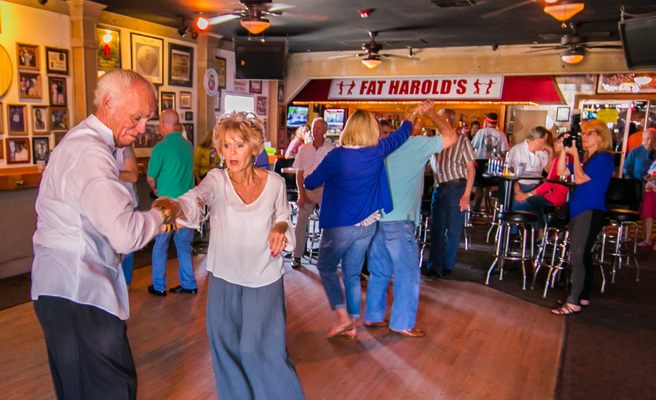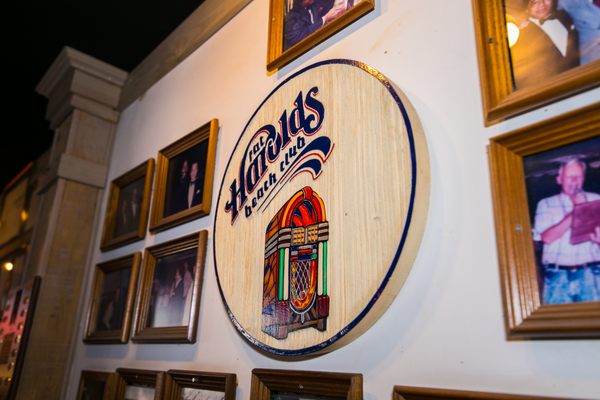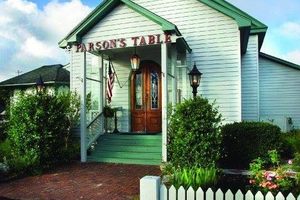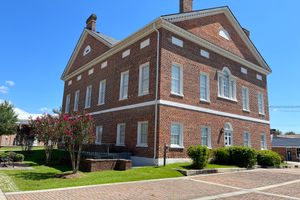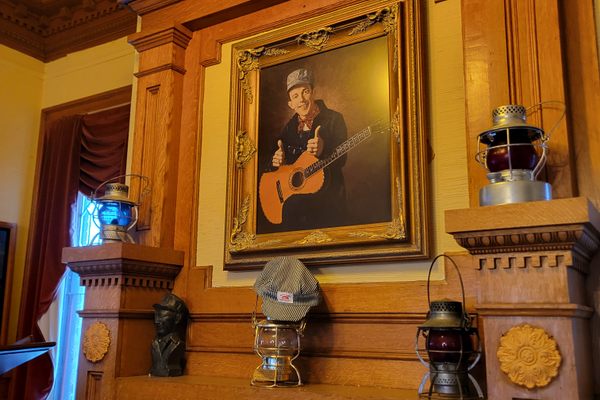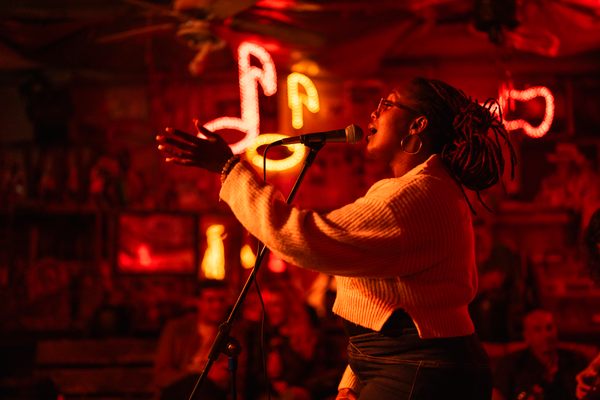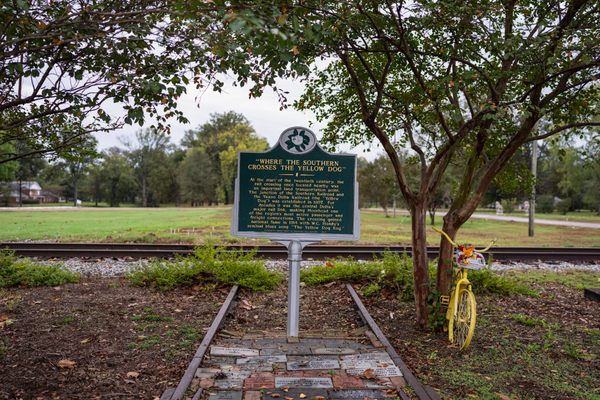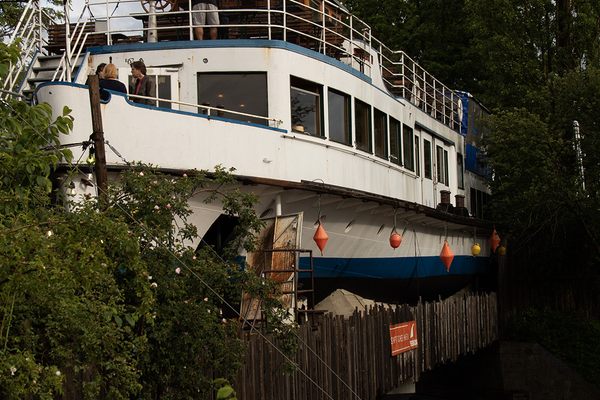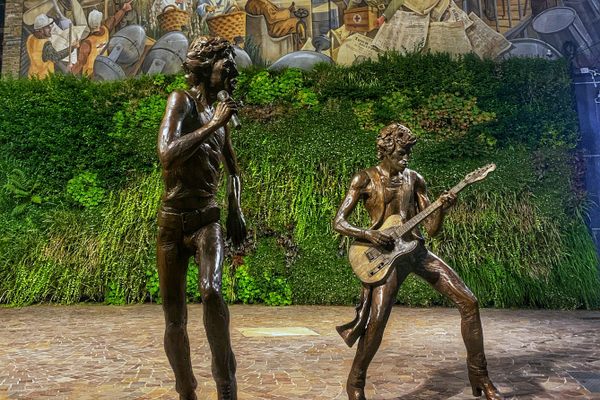About
“After a hot summer's day at work, or at the beach, many Carolinians think there is no greater pleasure than grabbing a few beers, heading for a local nightclub, and shagging the evening away,” a 1988 article in the Atlantic noted. And why wouldn’t they? The shag, sometimes called the swing dance of the south, was invented in South Carolina after all. It’s the official state dance of South Carolina. And there may be no better place to give it a twirl than Fat Harold’s Beach Club, the “Home of the Shag.”
The shag got its start on the beaches of the Carolinas in the 1940s. Beach life was the life for teenagers. It was a chance to experience a little bit of freedom away from the prying eyes of parents. As the Atlantic reported on the dance’s history and revival in 1988, these kids acted “like irresponsible good-for-nothings--beach bums—and were treated as such both by locals and by servicemen on leave from the many military bases in the area.” But there’s nothing cooler than doing something the adults don’t dig, so the kids leaned in. They developed a style of dress—slicked back hair and baggy pants for the boys, short shorts for the girls—and spent their nights popping nickels into the jukeboxes housed in the many open-air dance pavilions that dotted the shore. Each nickel provided a three-minute escape into another world. Swinging big bands and hot jazz perfect for the current trendy dance of the day, the jitterbug. But the exceptionally cool kids had moved past the jitterbug, and the music that accompanied it. And this might be the thing that really annoyed the adults.
Music, like much of 1940s life, was segregated. A Black community called Atlantic Beach had their own open-air dance spots and their own jukeboxes, which were stocked with what was then called “race music,” records made by Black musicians for Black listeners. But in 1947, Jim Harris, a white man who stocked the jukeboxes for both Atlantic Beach and white Grand Strand spots, “began to stick some race-music records, as a curiosity, into some of the Wurlitzers in the white pavilions.” They were a hit. The hipster life for kids on the Strand was forever changed.
New music needed a new dance. The shag combined some of the moves of the popular jitterbug, but with a slowed-down kind of sensuality. For years, every juke joint, roadhouse, house party, bar, and club was packed with couples mirroring each other in the slick six-count dance. But when Hurricane Hazel hit the state in 1954, it shut down a lot of beach life. The kids grew up and the shag faded away.
But in 1980, dedicated shaggers started bringing the dance back to prominence. Led by the Society of Stranders (S.O.S.), this renaissance found a home at Fat Harold’s, where the very first S.O.S. event was held. Over the years, Fat Harold’s became a spot for shag dancers, both those who fondly remembered it and those new to the dance, to gather. One of those groups, the Ocean Drive Shag Club, has made their home at Fat Harold’s since their founding.
Fat Harold’s keeps that spirit alive nightly with DJs spinning the tunes that made the shag famous. And for those who feel they haven’t quite mastered the dance, don’t worry; the club also offers dance lessons twice a week.
Related Tags
Know Before You Go
Open seven days a week, opening most days 4 p.m. Opens at 11 a.m. on Fridays and Saturdays. Shag lessons held on Mondays and Tuesdays.
Published
August 18, 2023

